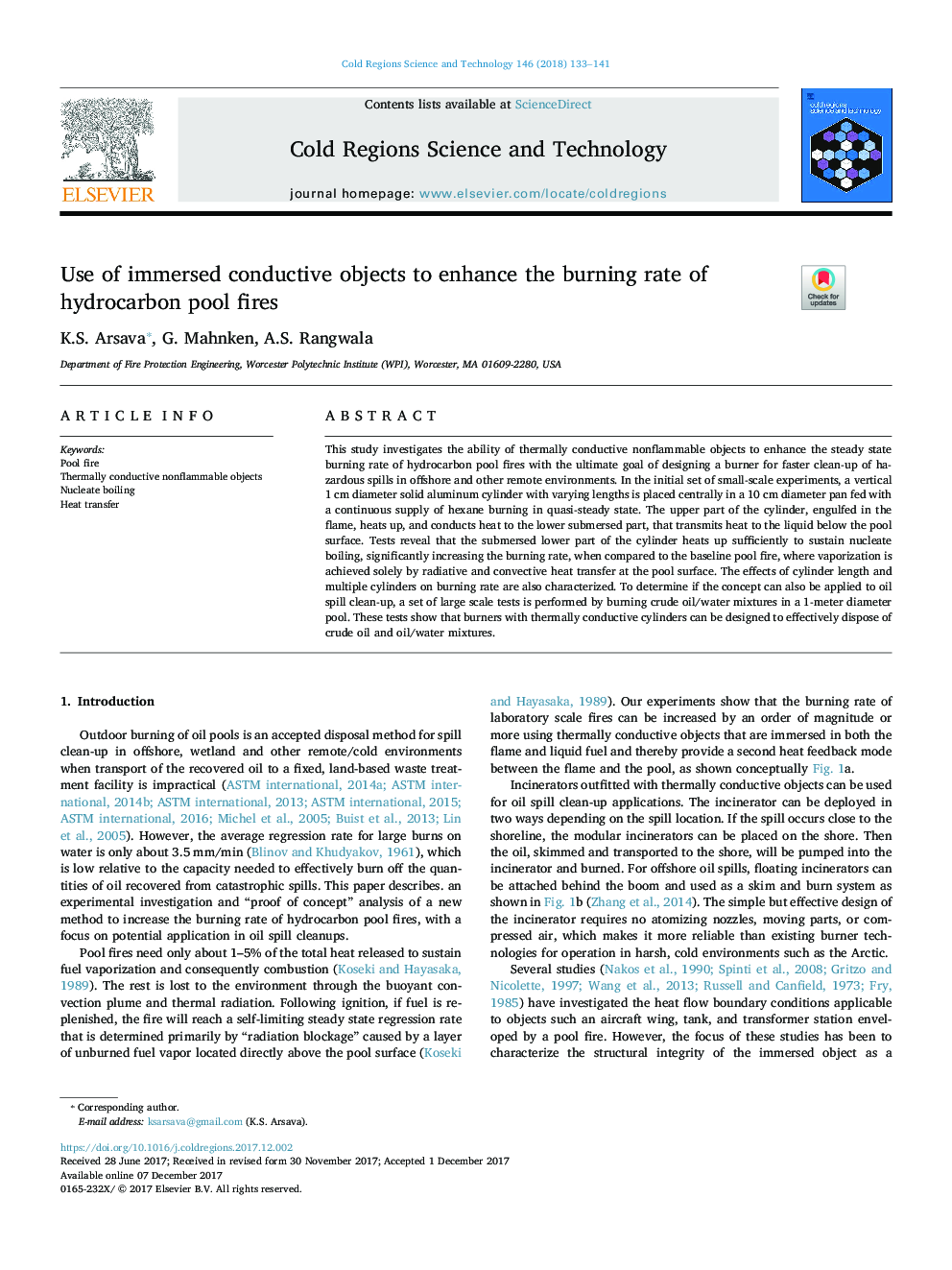| Article ID | Journal | Published Year | Pages | File Type |
|---|---|---|---|---|
| 8906589 | Cold Regions Science and Technology | 2018 | 9 Pages |
Abstract
This study investigates the ability of thermally conductive nonflammable objects to enhance the steady state burning rate of hydrocarbon pool fires with the ultimate goal of designing a burner for faster clean-up of hazardous spills in offshore and other remote environments. In the initial set of small-scale experiments, a vertical 1Â cm diameter solid aluminum cylinder with varying lengths is placed centrally in a 10Â cm diameter pan fed with a continuous supply of hexane burning in quasi-steady state. The upper part of the cylinder, engulfed in the flame, heats up, and conducts heat to the lower submersed part, that transmits heat to the liquid below the pool surface. Tests reveal that the submersed lower part of the cylinder heats up sufficiently to sustain nucleate boiling, significantly increasing the burning rate, when compared to the baseline pool fire, where vaporization is achieved solely by radiative and convective heat transfer at the pool surface. The effects of cylinder length and multiple cylinders on burning rate are also characterized. To determine if the concept can also be applied to oil spill clean-up, a set of large scale tests is performed by burning crude oil/water mixtures in a 1-meter diameter pool. These tests show that burners with thermally conductive cylinders can be designed to effectively dispose of crude oil and oil/water mixtures.
Related Topics
Physical Sciences and Engineering
Earth and Planetary Sciences
Earth and Planetary Sciences (General)
Authors
K.S. Arsava, G. Mahnken, A.S. Rangwala,
